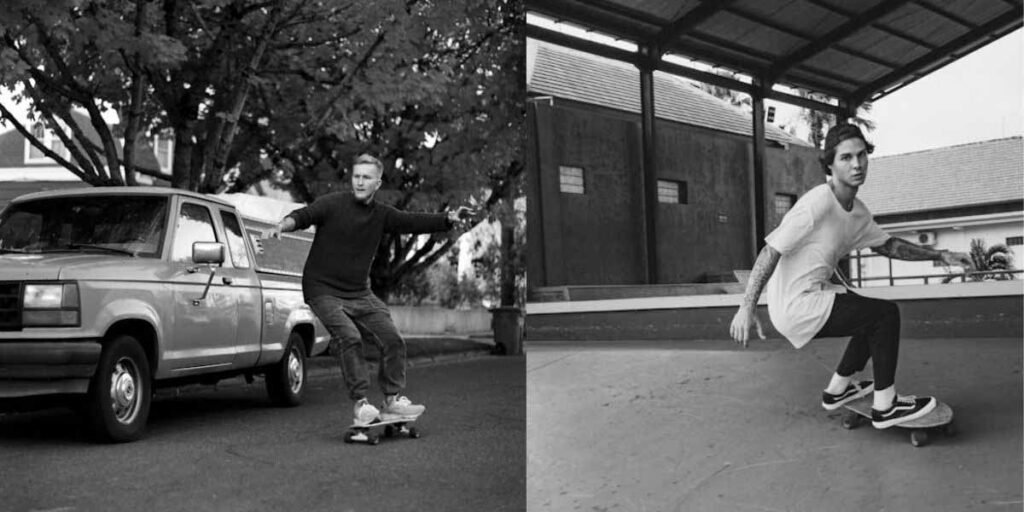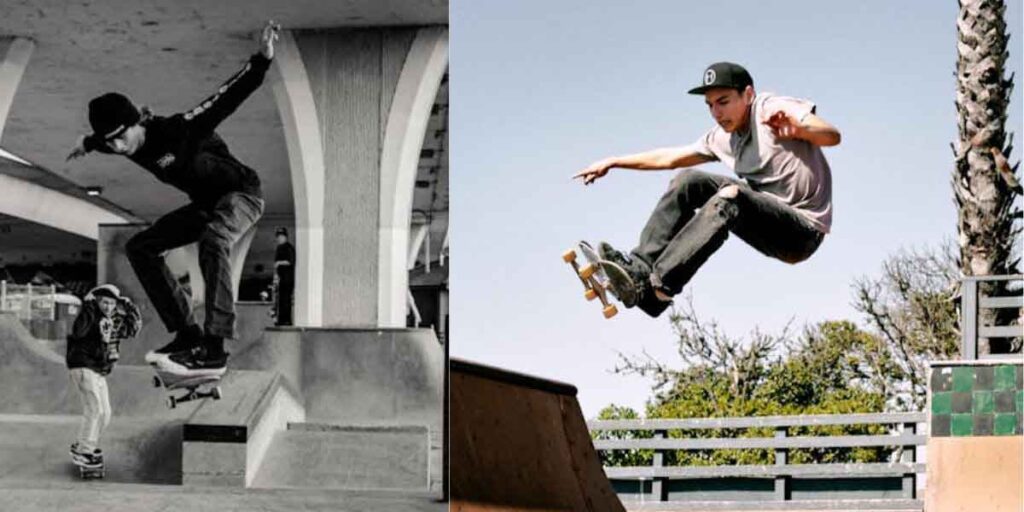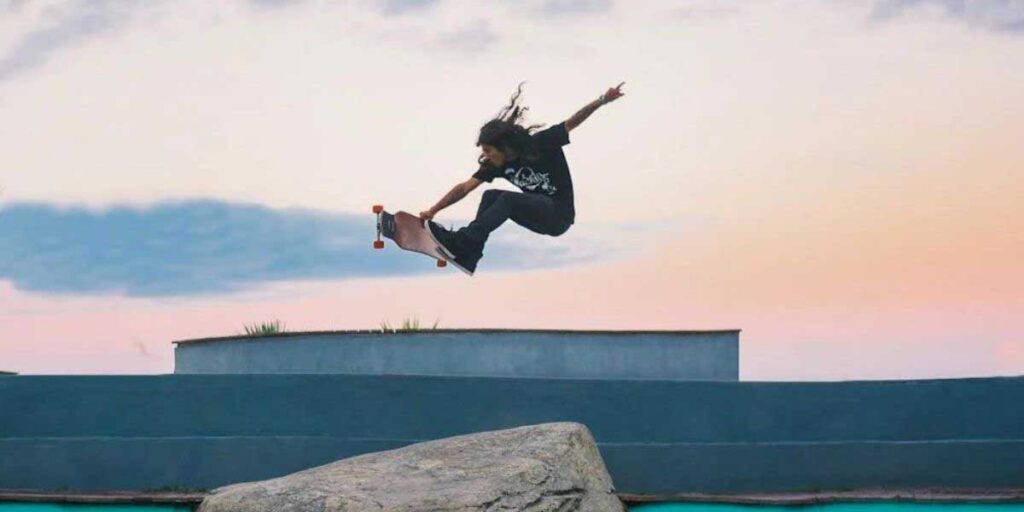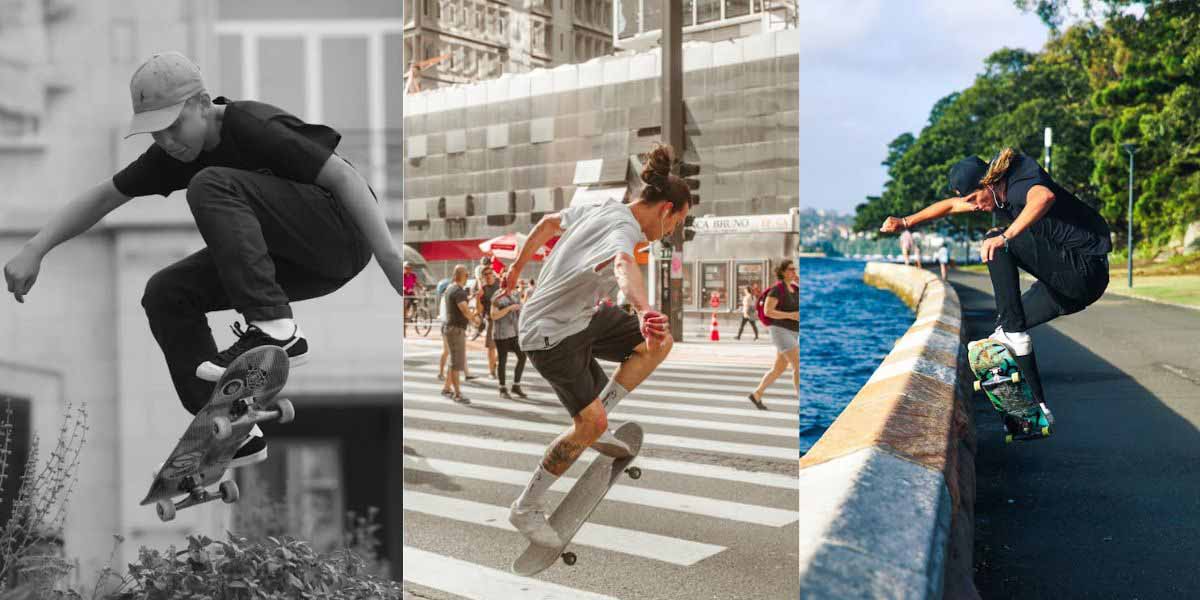Skateboarding became popular in the 1970s. The sport saw significant growth in the 1980s and 1990s.
Skateboarding has a rich history that dates back to the 1950s. Surfers in California wanted to surf on land, so they created skateboards. By the 1970s, skateboarding became a popular sport for young people.
The invention of polyurethane wheels made skateboarding much better. In the 1980s, skateboarding culture grew with new skate parks and professional competitions. In the 1990s, video games and media made skateboarding even more popular. Today, skateboarding is still a fun and exciting sport with a big community around the world.
Want to learn more about skateboarding’s history and its impact today? Read on to discover more about this exciting sport!
Origins of Skateboarding

Skateboarding began in the 1940s and 1950s. Surfers in California wanted something to do when the waves were flat. They attached roller skate wheels to wooden boards, creating the first skateboards. These early skateboards were simple and rough. But they paved the way for something amazing.
The Rise in Popularity: 1960s and 1970s
The 1960s and 1970s were pivotal for skateboarding. The invention of urethane wheels in the early 1970s was a game-changer. These wheels were smoother and faster. It is making skateboarding more enjoyable.
Around this time, the Zephyr team (also known as the Z-Boys) came onto the scene. They were a group of young surfers from Dogtown, a rough part of Santa Monica, California. Tony Alva, Stacy Peralta, and Jay Adams led the Z-Boys, bringing a new style to skateboarding. They introduced radical moves and daring stunts, drawing inspiration from surfing.
Skate parks started to appear, giving skaters a place to practice and show their tricks. Competitions became popular, and more people began to notice skateboarding.

The 1980s Boom
The 1980s saw a major boom in skateboarding. Magazines like “Thrasher” and “TransWorld Skateboarding” provided a platform for skaters to learn and share tricks. Skate videos also became popular, showcasing the skills of top skaters.
Brands like Powell Peralta and Vision Street Wear dominated the scene. These brands sponsored talented skaters. They were helping them become household names. Tony Hawk, Rodney Mullen, and Steve Caballero were among the top skaters of this era. Each brought unique skills and styles to the sport. Tony Hawk was known for his high-flying vert tricks. On the other hand, Rodney Mullen invented many of the street tricks we see today.
Street skateboarding became more popular in the 1980s. Skaters began to use urban environments as their playgrounds, grinding on rails and flipping their boards over stairs.
The 1990s: Mainstream Recognition
In the 1990s, skateboarding gained mainstream recognition. The X Games, which started in 1995, brought skateboarding to a global audience. These televised events showcased the best skaters and their incredible tricks.
Video games like the “Tony Hawk’s Pro Skater” series were released in 1999. They played a huge role in skateboarding’s popularity. These games allowed players to experience skateboarding virtually. As a result, skateboarding’s popularity grew even more.
Skateboarding brands continued to grow. Clothing and shoes designed for skaters became trendy. They influenced fashion beyond the skateboarding community.
The 2000s: Global Expansion
The 2000s saw skateboarding expand globally. Skateboarding has spread to countries all over the world. It is no longer confined to streets and parks in the United States. Countries like Brazil, Japan, and Germany have become skateboarding hotspots. Competitions are now held on a global scale. The X Games and the Olympics have helped increase its visibility. Many famous skateboarders come from different parts of the world. This has inspired young skaters everywhere.
Female skateboarders also began to gain recognition. Skaters like Elissa Steamer and Leticia Bufoni inspired many young girls to pick up a skateboard and join the scene.
Global events and competitions continued to grow. The rise of international competitions helped skateboarding become a truly global sport.
Social Media And Viral Videos
Social media has played a huge role in popularizing skateboarding. Platforms like Instagram and TikTok allow skaters to share their tricks and skills. Viral videos often feature amazing stunts and creative moves. These videos get millions of views, spreading the excitement of skateboarding. Influencers and professional skaters have large followings. They inspire new generations to take up the sport. The ease of sharing content has turned skateboarding into a global community.
Skateboarding in the 2010s and 2020s
In the 2010s and 2020s, skateboarding reached new heights. It was included in the Tokyo 2020 Olympics, a historic moment for the sport. This inclusion brought skateboarding into the spotlight and introduced it to a broader audience.
Skateboarding culture and community evolved over time. It began to embrace diversity and inclusivity. Technological advancements in skateboard design also played a role. These improvements made the boards lighter and more durable. It also enhances the skating experience.
Current trends show a mix of street and park skateboarding. Skaters like Nyjah Huston and Aori Nishimura are leading the way. They showcase their skills in competitions and on social media
The Cultural Impact of Skateboarding
Skateboarding has a significant cultural impact. It has been featured in movies, music, and art, influencing popular culture. Films like “Lords of Dogtown” and documentaries like “Dogtown and Z-Boys” highlight the history and culture of skateboarding.
The sport has also influenced youth culture and fashion. Skate brands like Vans and Supreme are popular not just among skaters but also in mainstream fashion. Skateboarding is seen as a form of self-expression and identity, allowing individuals to express their creativity and style.
Skateboarding’s Future Path

The future of skateboarding looks bright. The sport continues to grow and evolve. Emerging trends include electric skateboards and new tricks. Technology and social media will likely play a significant role in shaping the future of skateboarding.
Skateboarding will continue to inspire new generations of skaters. However, the community will keep growing, embracing new skaters and celebrating their skills.
Frequently Asked Questions (FAQs)
When did skateboarding first become popular?
Skateboarding began gaining popularity in the 1960s and 1970s. This was especially true with the invention of urethane wheels and the influence of the Z-Boys..
Who are some of the most influential skateboarders in history?
Some of the most influential skateboarders include Tony Hawk, Rodney Mullen, Tony Alva, Stacy Peralta, and Jay Adams.
How did the X Games impact skateboarding?
The X Games, starting in 1995, brought skateboarding to a global audience. It showcased the sport’s best athletes and tricks, significantly boosting its popularity.
How has social media influenced skateboarding?
Social media platforms like YouTube and Instagram have allowed skaters to share their tricks and skills with a global audience. This has helped the sport grow and evolve.
What was the significance of skateboarding being included in the Olympics?
The inclusion of skateboarding in the Tokyo 2020 Olympics marked a historic moment. It brought the sport into the mainstream and introduced it to a wider audience.
When did Tony Hawk start skateboarding?
Tony Hawk started skateboarding when he was just 9 years old, in 1977. His older brother gave him a blue fiberglass skateboard. And that’s when his incredible journey in skateboarding began.
What Year Did Skateboarding Become A Sport?
Skateboarding became recognized as a sport in the early 1970s. The first professional skateboarding competition took place in 1975.
Did People Skateboard In The 60s?
Yes, people skateboarded in the 1960s. Skateboarding became popular in the early 1960s, influenced by surfing culture.
Did People Skateboard In The 50s?
Yes, people skateboarded in the 1950s. Early skateboards were made from wooden boxes or boards with roller skate wheels.
Conclusion
Skateboarding has come a long way since the 1940s. Initially, it started with makeshift boards. Now, it’s even part of the Olympics. Moreover, skateboarding has captured many hearts. Its cultural impact is undeniable. It influences fashion, art, and youth culture. As the sport continues to evolve, its popularity is still growing.
Furthermore, skateboarding is a powerful form of self-expression. It symbolizes freedom. Whether you’re a seasoned skater or just starting, the thrill is captivating. Consequently, people around the world love it.

